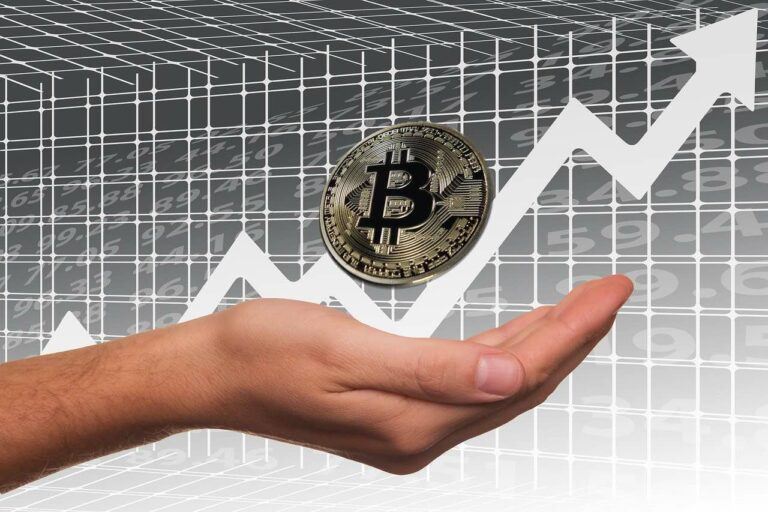Growing demand seems to have helped Bitcoin go above the $9,300 level on Wednesday (May 6).
According to data from CryptoCompare, around 11:40 UTC yesterday, the Bitcoin price went above $9,300 for the first time since February 25:

Since “Black Thursday” (March 12) — the day on which the price of Bitcoin (and many altcoins) dropped roughly 50% due to the liquidity crisis caused by the economic impact of the COVID-19 pandemic — the price of Bitcoin has gone up almost 90%.
Macro-economist and crypto analyst/trader Alex Krüger says the increase in demand for Bitcoin is from both retail and professional/institutional investors/traders:
$BTC has been going up on increased demand coming from both retail and non-retail market participants. This can be appreciated in various data points such as increasing spot volumes and CME open interest. The proximity of the halving helps increase demand temporarily.
— Alex Krüger (@krugermacro) May 6, 2020
Krüger believes that there are four interconnected macroecnomic factors behind the increase in demand for Bitcoin:
Bitcoin current macro drivers:
1. loss of faith in governments
2. lower rates push speculators out the risk curve
3. negative real interest rates
4. inflationThese are all interconnected, the faces of a four-sided dice.
— Alex Krüger (@krugermacro) May 6, 2020
Furthermore, we currently seem to have an extra boost in demand due to the Fear of Missing Out (“FOMO”). This is because there are many people who believe that the upcoming Bitcoin halving on May 12 — when the reward for mining one block will get halved from 12.5 BTC to 6.25 BTC — has not been fully priced in and that the price of Bitcoin could go significantly higher in the months that follow. And of course, there are many people who believe that a rising tade lifts all boats, and so many altcoins have also been going up in recent weeks.
This FOMO is what Binance Co-Founder and CEO Changpeng Zhao (aka “CZ”) may have been alluding to in two tweets that he sent out in April (on the 2nd and on the 29th):
I guess this was true. Plenty of money ready to jump in, and in full FOMO mode.
Everyone will be in Crypto. Don't get left behind! https://t.co/rfvRS7uhGK
— CZ Binance 🔶🔶🔶 (@cz_binance) April 2, 2019
Damn son, $15.9 BILLION a couple hours later.
Still going strong. FOMO mode now. Took a while, lol.
Slowly but surely. https://t.co/Fe1PPX0kim pic.twitter.com/gsgfDyVsbQ
— CZ Binance 🔶🔶🔶 (@cz_binance) April 30, 2020
On Tuesday (May 5), during an interview with CNBC, Mike Novogratz said that he expected “a push to hard assets” as we watch the Federal Reserve continue to engage in massive amounts of money printing in order to fund the stimulus packages needed to fight the economic impact of COVID-19:
“I think there will be a push to hard assets… I still own a lot of gold.
“I love Bitcoin. Next Tuesday, we have the Bitcoin halving, where the inflation rate gets cut in half.
“So you talk about inflation and fiat currencies where the Fed is printing money like it’s a money printing machine. And in the Bitcoin space, the money supply gets cut 50%… Big deal there.
“We’re seeing lots of new investors in that space. Hedge funds that are buying it, not just individual managers. They’re buying it in their fund. I think you’ll see some announcements soon of that or investor letters coming out. And so all positive stuff in terms of flow in that space.”
On May 1, CNBC’s post-market show “Fast Money” explained the significance of Bitcoin’s next (third) block reward halving (aka “the Halving” or “the Halvening”), which is expected on May 12, and how this event could affect the price of Bitcoin.
The person doing the explaining was CNBC’s Brian Kelly (aka “BK”), who is also the founder and CEO of crypto hedge fund BKCM LLC.
Melissa Lee, who is the host of Fast Money, started a segment titled “Big Bitcoin Breakout” by asking Kelly how many days we had to wait until the next Bitcoin Halving.
Kelly said:
“It’s about 11 days to the halving, and so what that means, what people should know, is that as the whole world is quantitative easing, Bitcoin’s about to be quantitative hardening.
“So they’re gonna cut the daily supply: the software is gonna cut the daily supply.
“It doesn’t mean that the price of Bitcoin is being cut in half — it just means that the daily supply is being cut in half but [you] want to think about it like oil, where all of a sudden, in 11 days, half [of] the oil rigs are turned off, and so that supply gets reduced.
“In the past, this has been a catalyst for very very big run-ups.”
And on April 30, Dan Morehead, Founder, Co-CIO, and CEO of blockchain-focused investment firm Pantera Capital Management LP (“Pantera Capital”), discussed both of these topics in the April 2020 issue of Blockchain Letter (Pantera Capital’s monthly newsletter), which Pantera Capital published as a blog post on May 4.
Here is what Morehead wrote about the next Bitcoin halving on May 12:
“Although there are only a couple of data points – and with the caveat that the past doesn’t predict the future – halvings have coincided with increases in price due to a perceived and/or real scarcity of supply.
“Efficient Markets Theory would hold that if we **all** know it’s going to happen, then it has to be priced in.
“Paraphrasing a line attributed to Warren Buffet on the dogma, ‘The markets are almost always efficient, but the difference between almost and always is $80 billion to me.’
“Thus, even if we think everybody knows something it doesn’t mean there isn’t a ton of money to be made.
“It seems reasonable to say that if the new supply of bitcoin is cut in half, all else being equal, the price should rise.”
Featured Image by “geralt” via Pixabay.com









